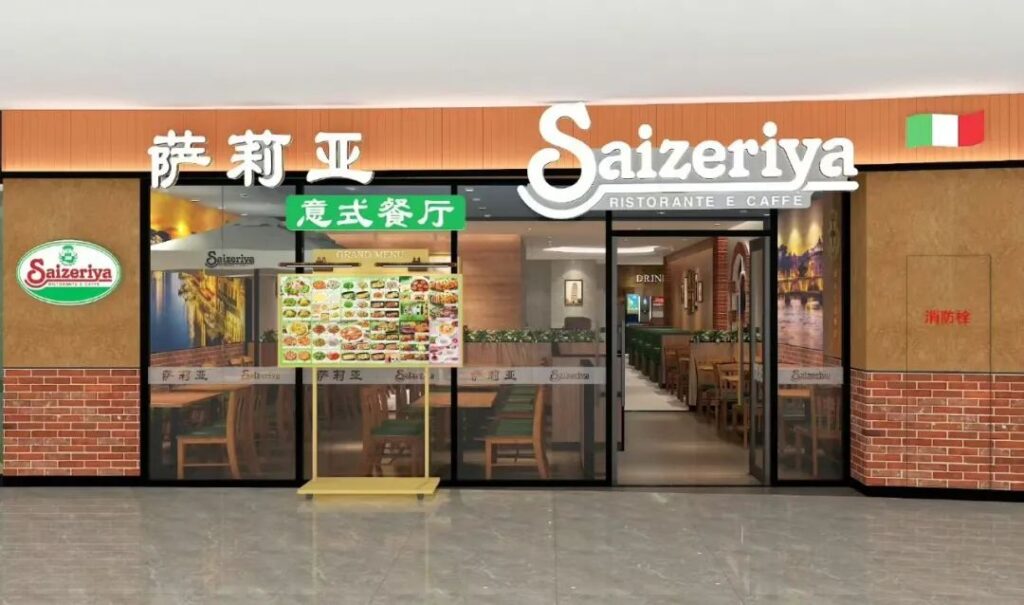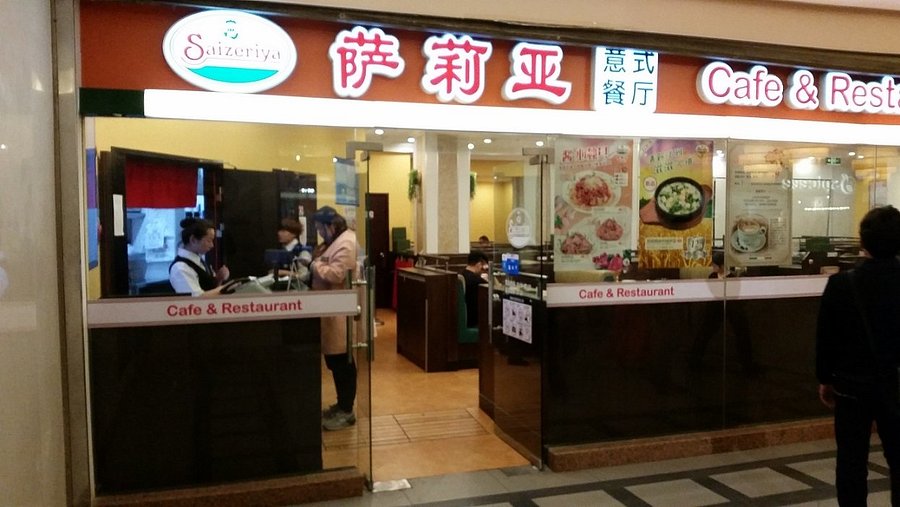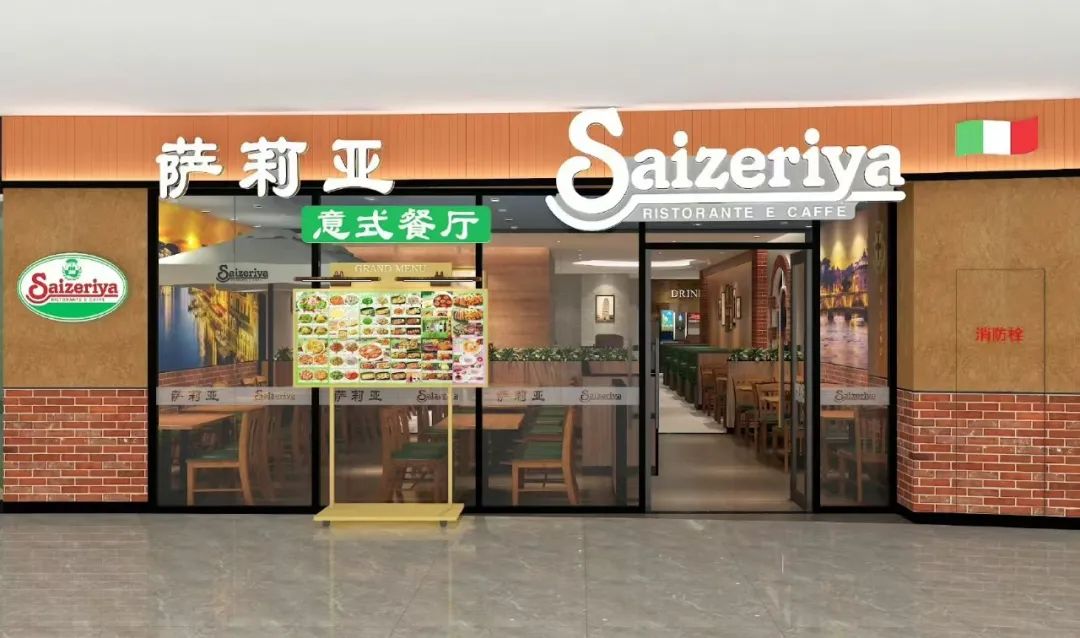- New Saizeriya podcast just dropped! 🎙️ No time to read? Rest your eyes, tune in with your ears
- Introduction
- Takeaway 1: Asia Isn’t Just Expansion—It’s the Profit Engine
- Takeaway 2: Australia—the Hidden Food Base Powering the World
- Takeaway 3: Unshakable Dividends Through Crisis
- Takeaway 4: A Culture of Relentless Experimentation
- Conclusion
- Summary of Nikkei Shimbun’s September 21 Report on Saizeriya
- Some Small Reminders
- (Reference) Saizeriya’s storefront designs in China
New Saizeriya podcast just dropped! 🎙️ No time to read? Rest your eyes, tune in with your ears
Introduction
For millions in Japan, Saizeriya is a familiar and beloved institution: a place for surprisingly affordable Italian meals, a reliable hangout for students, and a go-to spot for families. Its simple, no-frills approach to food and service has made it a staple of the casual dining landscape.
Yet behind this façade of cheap pasta and pizza lies a business strategy that is anything but simple. A close look at the company’s official financial disclosures reveals a complex, resilient, and fascinating global operation. The story is not just about keeping prices low, but about strategic international expansion, tight supply-chain control, and a disciplined approach to both finance and innovation.
In this article, we break down four pillars of Saizeriya’s strategy—facts that are rarely discussed but essential to understanding the restaurant everyone thinks they know.
Takeaway 1: Asia Isn’t Just Expansion—It’s the Profit Engine
The common assumption is that Saizeriya’s business, with over 1,000 locations in Japan, is centered on its domestic operations. While Japan generates the most revenue, the numbers tell a very different story about where profits actually come from.
FY2024 Segment Results
| Segment | Sales | Operating Profit |
| Japan | 146.4 billion yen | 2.7 billion yen |
| Asia | 79.3 billion yen | 11.6 billion yen |
Despite having only about half the sales of the Japan segment, Asia generated more than four times the profit, with a remarkable ~14.6% margin versus Japan’s ~1.8%. This counter-intuitive reality shows that Saizeriya’s growth and profitability now overwhelmingly come from overseas markets such as Shanghai, Guangzhou, Beijing, Hong Kong, Taiwan, and Singapore.
For most customers dining in Japan, the fact that Asia is the company’s true profit engine remains a hidden truth.
Takeaway 2: Australia—the Hidden Food Base Powering the World
Buried within Saizeriya’s reports is a third geographical segment: Australia. Unlike Japan and Asia, which focus on restaurants, Saizeriya Australia Pty. Ltd. primarily manufactures and processes food ingredients for the entire group.
In FY2024, Australia generated ¥10.8B in sales and ¥473M in operating profit—not from serving customers, but from supplying Saizeriya’s global kitchen.
This vertical integration is strategically brilliant. Far from being a cost center, the Australian base is profitable and self-sustaining. By controlling its own production in a resource-rich region, Saizeriya shields itself from inflationary shocks that push competitors to raise prices, preserving both affordability and consistency across its global supply chain.
Takeaway 3: Unshakable Dividends Through Crisis
he COVID-19 pandemic devastated the restaurant industry, forcing closures and driving many chains into financial distress. Saizeriya was not immune: in FY2020, it posted a ¥3.8B operating loss and a ¥3.45B net loss.
Even so, the company did something remarkable: it kept paying dividends. While peers suspended payouts, Saizeriya’s dividend remained unchanged for four consecutive years:
- FY2020: ¥18/share
- FY2021: ¥18/share
- FY2022: ¥18/share
- FY2023: ¥18/share
This steadfast commitment reflected confidence in its long-term recovery plan. That confidence was validated in FY2024, when the dividend rose to ¥25/share, rewarding loyal investors and proving the strategy’s resilience.
Takeaway 4: A Culture of Relentless Experimentation
Saizeriya’s success is not just about refining one formula. Its history reveals a culture of constant experimentation with new business formats, including:
- Eat Run Jujo
- SpaQ & TacoQ
- Sandwich Counter
- Spaghetti Mariano
- Imendokoro
But experimentation came with ruthless pragmatism. In August 2022, the company closed all of its experimental formats in one decisive move. This shows a corporate culture unafraid to innovate—and equally unafraid to cut ventures that fail, refocusing resources on proven strengths.
Conclusion
The familiar, low-cost Saizeriya is only the surface. Its ability to sustain dividends (Takeaway 3) is underpinned by highly profitable Asian operations (Takeaway 1), which themselves are supported by the cost-efficient Australian base (Takeaway 2). Together, this robust foundation enables Saizeriya to fund continuous experimentation while swiftly cutting losses (Takeaway 4).
This virtuous cycle—anchored in financial discipline, supply-chain control, and pragmatic innovation—is the true secret behind Saizeriya’s success. As the company expands its global footprint, it poses a pressing question: what can other businesses learn from this rare combination of extreme customer value and resilient international strategy?
Summary of Nikkei Shimbun’s September 21 Report on Saizeriya
- Saizeriya’s Expansion Plan
- Saizeriya plans a large-scale expansion in China, with the number of stores set to double to 1,000 by 2035—nearly matching its domestic footprint in Japan (about 1,050 stores). The company expects to add more than 50 new outlets per year.
- It has already established a subsidiary in Wuhan and invested about USD 30 million to build a new factory in Guangzhou for sauces, pasta, and pizza. The facility is scheduled to begin operations in early 2026.
- Moves by Other Japanese Restaurant Brands in China
- FOOD&LIFE COMPANIES (F&LC): Its conveyor-belt sushi brand Sushiro aims to expand its presence in China by about 26% to 190 stores by the fiscal year ending September 2026. Prices start at 8 yuan per plate, with localized offerings such as “spicy chicken (Kou Shui Ji) sushi.”
- Monogatari Corporation: Plans to expand its hamburger chain Nikunikudamai to 100 outlets, shifting focus away from its high-priced crab restaurant business, which has struggled with weak demand.
- Toridoll Holdings: Preparing to roll out low-cost beef rice bowls (Yakiniku-don) in China at 30.8 yuan (cheaper than in Japan). The company plans to grow from the current 5 stores to 500.
- Macroeconomic Background
- China is currently experiencing sluggish consumption and mounting deflationary pressures. The CPI declined year-on-year for four consecutive months, and fell again by 0.4% in August.
- Against this backdrop, Japanese restaurant operators are leveraging their homegrown central kitchen + efficient operations model to offer a combination of “high quality at low prices,” which has resonated with Chinese consumers.
- Nevertheless, the growth potential of China’s food and beverage market remains enormous. In 2024, the market reached RMB 5.5 trillion (+6% YoY), and it is projected to expand to RMB 6.6 trillion by 2029, up 20% from 2024.
Some Small Reminders
- If you live in Japan and plan to treat visiting friends or relatives from China to a meal, you might want to avoid choosing Saizeriya. After all, this budget-friendly restaurant chain is already everywhere in China. Taking them there could feel a bit “cheap” and not very presentable.
- Meanwhile, Japan’s post-Ishiba prime ministerial election is scheduled for October 4. If the right-leaning, China-skeptical Sanae Takaichi takes office, Japan–China relations may deteriorate for the long term. That would likely hurt Japanese companies operating in China, dragging down both their performance and share prices. As always: the stock market carries risks, so invest with caution.
(Reference) Saizeriya’s storefront designs in China
(Images below are not original – sourced from the internet)







Comments